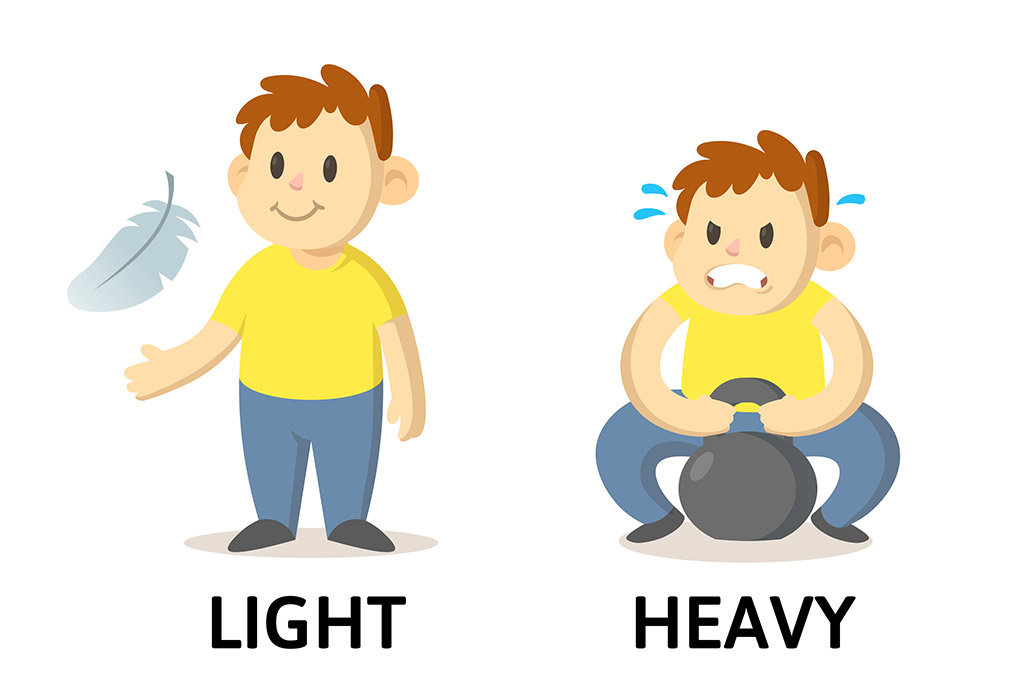How Heavy Was Iron Mike Tyson? Unpacking The Legend's Physical Presence
When people talk about the sheer force of Iron Mike Tyson, one question often pops up: how heavy was he, really? It's a curious thing, that, thinking about the weight of a person who could deliver such powerful punches. His physical presence, you see, was a huge part of his fighting style, a truly defining characteristic that made him stand out. The idea of "heavy" in this context isn't just about a number on a scale; it speaks to the immense mass and power he carried into the ring, shaping his legendary career.
For fans and those just learning about boxing, understanding Mike Tyson's weight changes throughout his time as a fighter offers a fascinating look. It’s not just a random fact; it helps us grasp how he prepared, how his body changed, and how those changes might have affected his incredible performances. We often hear stories about athletes needing to manage their bodies very carefully, and Tyson was no different, almost. His weight was a tool, a part of his overall strategy, and it shifted quite a bit over the years.
So, we're going to explore this very topic, digging into the numbers and the stories behind them. We'll look at his fighting weight at different points, considering how his training and career stages played a role. It’s a way to appreciate the man behind the myth, to understand a bit more about the physical demands of being a world-class boxer, especially someone as impactful as Mike Tyson. Basically, it’s about more than just pounds; it’s about the sheer impact of his frame.
Table of Contents
- Iron Mike Tyson: A Brief Biography
- Mike Tyson: Personal Details and Bio Data
- The Early Years of Tyson's Career and His Weight
- Peak Performance and Weight Stability
- Later Career: Weight Shifts and Challenges
- The Impact of Weight on Tyson's Fighting Style
- How Tyson Managed His Body and Training
- Mike Tyson's Return to the Ring and His Current Weight
- Frequently Asked Questions About Mike Tyson's Weight
Iron Mike Tyson: A Brief Biography
Mike Tyson, born in Brooklyn, New York, on June 30, 1966, grew up in a rather tough environment. His early life was full of challenges, and he found himself in trouble quite a bit. It was actually at a reform school where his boxing talent was first spotted by Bobby Stewart, a former boxer and counselor. Stewart saw something special in the young Mike, a raw strength and a natural knack for the sport, you know? This discovery changed everything for him, setting him on a path that would lead to boxing glory.
After a short time with Stewart, Tyson was introduced to Cus D'Amato, a legendary boxing trainer who became a father figure and mentor. D'Amato really shaped Tyson, teaching him the peek-a-boo style of boxing, which relied on quick movements, powerful hooks, and an aggressive approach. This training, basically, turned him into a formidable force. Tyson made his professional debut in 1985, and he quickly became known for his devastating knockout power. He was, in a way, a wrecking ball in the ring.
By 1986, at just 20 years old, Tyson became the youngest heavyweight champion in history, beating Trevor Berbick. He then went on to unify the heavyweight titles, a truly rare feat. His career was marked by incredible highs, like his undisputed championship reign, and also some very public lows, including personal issues and time away from the sport. Even with all the ups and downs, his impact on boxing, and on popular culture, has been absolutely immense, still talked about today.
Mike Tyson: Personal Details and Bio Data
| Full Name | Michael Gerard Tyson |
| Nickname(s) | Iron Mike, Kid Dynamite, The Baddest Man on the Planet |
| Born | June 30, 1966 (age 57 as of today, November 19, 2023) |
| Birthplace | Brooklyn, New York, U.S. |
| Nationality | American |
| Height | 5 ft 10 in (178 cm) |
| Reach | 71 in (180 cm) |
| Stance | Orthodox |
| Boxing Record | 50 wins (44 KOs), 6 losses, 2 no contests |
| Notable Achievements | Youngest Heavyweight Champion in history, Undisputed Heavyweight Champion |
The Early Years of Tyson's Career and His Weight
When Mike Tyson first stepped into the professional boxing ring in March 1985, he was already a formidable presence. For his debut, he weighed in at around 215 pounds. This weight, for a man of his relatively shorter stature in the heavyweight division, made him seem incredibly dense and powerful, like a compact engine, you know? It was a weight that really allowed him to move quickly, yet still deliver devastating blows. He was, essentially, built like a tank, but a fast one.
As he quickly climbed the ranks, racking up knockout after knockout, his weight stayed fairly consistent. For his historic fight against Trevor Berbick in November 1986, where he became the youngest heavyweight champion, Tyson weighed in at approximately 220 pounds. This was, in a way, his ideal fighting weight during those early, dominant years. It allowed him to maintain that explosive speed and the sheer force that defined his early career. He was, quite literally, a force of nature.
This period saw Tyson often weighing in between 215 and 222 pounds for most of his fights. This range seemed to be where he felt most comfortable and effective. It was a weight that, for him, balanced raw power with the agility needed to slip punches and unleash his famous combinations. You could say, in some respects, that this was his sweet spot, where he was virtually unstoppable.
Peak Performance and Weight Stability
During his undisputed heavyweight championship reign, from the late 1980s into the early 1990s, Mike Tyson generally maintained a very stable fighting weight. This period is often seen as his absolute prime, when he seemed almost invincible. For many of his most significant title defenses, he would typically step onto the scales somewhere between 218 and 222 pounds, give or take a pound or two. This consistency, you see, was a sign of his rigorous training and careful preparation.
For example, when he faced Michael Spinks in 1988, a fight that many consider one of his most dominant performances, Tyson weighed in at 218 pounds. This was a classic example of his peak physical condition, combining speed, power, and a rather imposing physique. His trainers and conditioning team, basically, had him dialed in, ensuring he was at his optimal mass for maximum impact. He was, quite simply, in incredible shape.
This weight range allowed him to execute his signature style perfectly: bobbing and weaving, getting inside his opponent's reach, and then unleashing those incredibly fast, heavy punches. It was a weight that, in a way, maximized his natural attributes. The discipline to stay within this narrow weight window for so many high-stakes fights really highlights the dedication he had during that part of his career, a truly amazing feat of body management.
Later Career: Weight Shifts and Challenges
As Mike Tyson's career progressed into the mid-1990s and beyond, his fighting weight started to show more variation. After his release from prison and his return to the ring in 1995, he often came in heavier than his peak years. For instance, in his first fight against Evander Holyfield in 1996, Tyson weighed 222 pounds, which was still within his prime range, but perhaps on the higher side of it. This weight, you know, still allowed for power, but perhaps not the same nimble movement.
However, for the infamous rematch with Holyfield in 1997, Tyson was lighter, coming in at 214 pounds. This shift might have been an attempt to regain some of his earlier speed, or it could have reflected different training approaches. It's interesting to note these fluctuations, as they can sometimes tell a story about an athlete's physical state or strategic adjustments, or just, like, how their body is adapting to things. He was, in some respects, experimenting with what felt right.
Towards the very end of his professional career, particularly in the early 2000s, Tyson's weight often increased significantly. For his highly anticipated fight against Lennox Lewis in 2002, he weighed in at 234 pounds, his heaviest for a major professional bout. This was, basically, a much larger frame than his younger self, and some observers felt it affected his speed and endurance. For his final professional fight against Kevin McBride in 2005, he weighed 233 pounds, showing that the heavier trend continued. It was, arguably, a sign of the physical toll a long career can take.
The Impact of Weight on Tyson's Fighting Style
Mike Tyson's weight was absolutely central to his unique and devastating fighting style. In his prime, when he was typically around 218-222 pounds, this specific mass allowed him to be incredibly explosive. His shorter stature for a heavyweight, combined with that dense weight, meant he could generate immense leverage and power in his punches, especially his hooks and uppercuts. It was, in a way, like a tightly coiled spring, ready to unleash energy.
That particular weight range also contributed to his famous head movement and ability to get inside. Being compact and powerful meant he could bob and weave effectively, making him a difficult target. Once he was close, his relatively short reach didn't matter as much, and his powerful frame could deliver those crushing blows. You could say, quite simply, that his weight was perfectly suited for his aggressive, swarming approach.
As he got heavier in his later career, moving into the 230s, some of that quickness and agility seemed to lessen. While he still carried significant power, the increased weight might have made it harder to maintain the same pace for an entire fight, or to move as fluidly as he once did. It's a common thing for fighters, that, as they age, their bodies change, and sometimes carrying more mass can affect endurance and speed. His weight, in essence, told a story of his career's progression.
How Tyson Managed His Body and Training
Managing the body of an elite athlete like Mike Tyson involved a truly rigorous and comprehensive approach, especially when it came to his weight. In his prime, his training was legendary for its intensity and discipline. It wasn't just about hitting the heavy bag; it was about a complete system designed to build power, speed, and endurance while maintaining that optimal fighting weight. This meant, basically, a very strict regimen.
His training camps involved multiple daily sessions, often starting before dawn. These sessions included road work, extensive calisthenics, sparring, heavy bag work, speed bag drills, and skipping rope. To manage his weight, his diet was carefully controlled, providing the necessary fuel for his intense workouts without adding excess mass. It's like, every calorie and every movement had a purpose, you know? The idea of planning your weight lifting routines, logging workouts, and tracking your exercise progress was, in a way, central to his success.
The concept of "heavy" for Tyson wasn't just about being big; it was about being functionally heavy, where his mass contributed to his power and stability. This required constant monitoring and adjustment. Like, if he needed to shed a few pounds, the intensity of the road work might increase, or his diet would be tightened further. Conversely, if he needed to maintain his power, the focus would be on strength training and proper nutrition. It was, honestly, a full-time job for him and his team to keep his body in that specific, powerful state.
You can learn more about training for boxing on our site, and if you're interested in the history of the sport, link to this page for more details. The careful balance of diet and exercise is something any serious athlete understands, and Tyson's career is a prime example of its importance.
Mike Tyson's Return to the Ring and His Current Weight
Even after officially retiring from professional boxing in 2005, Mike Tyson has, in a way, remained a figure of fascination. His brief return to the ring for an exhibition match against Roy Jones Jr. in November 2020 really sparked renewed interest in his physical condition. For that fight, Tyson weighed in at 220.4 pounds, which was remarkably close to his prime fighting weight from the late 1980s. This was, honestly, quite a surprise for many people, showing his dedication to getting into shape.
This ability to get back into fighting trim, even at an older age, speaks volumes about his underlying athleticism and discipline. It showed that even years after his professional career ended, he could still, with focused effort, manage his body to a very high standard. The meaning of "heavy" for him, even then, was still about being characterized by mass and weight that could be used effectively in a boxing setting. He was, basically, proving he still had it.
As of today, November 19, 2023, Mike Tyson continues to be active in various ventures, including podcasts and business endeavors. While he's no longer training for competitive fights, his commitment to fitness remains a part of his public persona. He often shares glimpses of his workouts, showing that he still maintains a powerful physique, even if it's not at the precise fight weight of his younger days. He is, in some respects, still Iron Mike, just in a different phase of life.
Frequently Asked Questions About Mike Tyson's Weight
What was Mike Tyson's heaviest weight for a professional fight?
Mike Tyson's heaviest weight for a professional fight was 234 pounds. This was when he faced Lennox Lewis in June 2002. He was, in a way, a much larger man than during his earlier, more dominant years. This weight was a significant increase from his typical prime fighting weight.
What was Mike Tyson's lightest weight during his professional career?
During his professional career, Mike Tyson's lightest weight was around 214 pounds. He weighed this for his rematch against Evander Holyfield in June 1997. This was, basically, an attempt to be more agile, perhaps, after coming in a bit heavier for their first fight.
How did Mike Tyson's weight change throughout his career?
Mike Tyson's weight generally started in the 215-222 pound range during his early and peak years, which was his most dominant period. As his career progressed into the late 1990s and early 2000s, his weight began to increase, often settling in the 225-234 pound range for his later fights. This was, in some respects, a natural progression for a fighter aging in the heavyweight division.

Teach Kids About The Concept of Heavy & Light Objects

How to Take Care When Lifting Heavy Objects | HubPages

Teach Kids About The Concept of Heavy & Light Objects